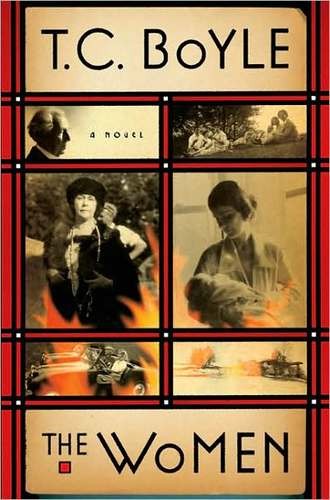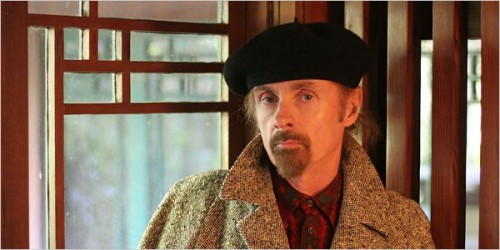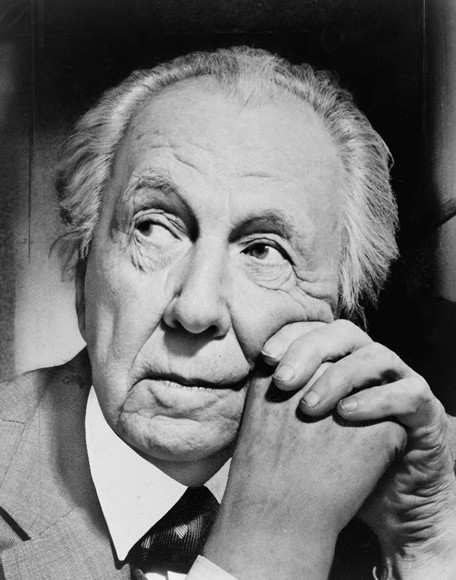The Women: By T.C. Boyle
A Novel on Architect Frank Lloyd Wright's Loves
By: Mark Favermann - Feb 21, 2009
The Women
By T.C. Boyle
Published by Viking Press. 451 pages, 2009
There are library shelves filled with books about this architectural master. He often wore a cape, carried a cane and wore his hair unstylishly long. To seem taller, grander and create more presence, he wore high heels on his shoes and large brimmed hat. He was a master of self-marketing. He is considered the greatest architect of the 20th Century, perhaps the greatest American architect ever. Frank Lloyd Wright was a design genius. Yet, over a long often fruitful career, his finances, personal scandals and intimate relationships were a total mess.
Most books written about Frank Lloyd Wright have been nonfiction. With the exception of Nancy Horan's 2007 book, Loving Frank, The Women by T.C. Boyle fictionally interprets, translates and even channels individuals, situations, facts, conversations and even thoughts involved in the four main women in Wright's life. Beginning with his first, probably too young wife, Kitty Tobin, who bore him six children, to his tragically murdered mistress, Mamah Borthwick Cheney, to the unbalanced, Maud Miriam Noel, to his last wife the exotic, Olgivanna Milanoff, Boyle focuses on the women who loved him. The book explores what transpired between them and Wright and sometimes between the women themselves. Set during the first half of the 20th Century, the author looks at fame and celebrity unlike website, tabloid and magazine figures today. Wright was not a celebrity just because he marketed himself well; he was a celebrity because of exceptional talent.
Well researched, The Women, brings all of the individuals to life, rounding them into human beings rather than thin figures of the recent historical past. This is done with wit, inventiveness, and sometimes surprise. These are done with T.C. Boyle's consummate skill as a good yarn teller. He demonstrated this in previous novels about American originals, John Harvey Kellogg, the cereal entrepreneur (The Road to Wellville) and sex researcher Alfred C. Kinsey ( The Inner Circle). Like Wright, both of these men had virtual cult followings and received mythic veneration. In fictional settings, Boyle's humanization adds great dimension to all three men.
The author uses a clever narrative device to string together the domestic story lines: Wright's fascination for Japanese culture and aesthetics. He extrapolates from Wright's time in Japan with Miriam, complicating the layers of the fiction. The story is introduced by a young Japanese architect named Tadashi Sato. Starting out by describing his drive to an isolated Taliesin to join the Wright Fellowship and become a disciple of his idol who created Tokyo's Imperial Hotel that survived the major 1923 earthquake.
Sato supposedly stayed at Taliesin for 9 years. Referring to Frank Lloyd Wright as Wrieto-San, Sato is actually writing this account of his great mentor over 50 years after the events took place. He is being assisted in translation by an Irish-American named Seamus O'Flaherty who is married to one of Sato's granddaughters. Beginning with just footnotes early in the novel, he breaks into first person narrative as the book progresses. He does rather hero worship Wright, but Sato also observes the master's real feet of clay.
Each of Wright's paramount lovers has a distinct character. Certainly Catherine (Kitty) Tobin was the put upon earth mother who refuses to divorce Wright for a long time. He abandons her for his mistress, Mamah Borthwick Cheney, who, along with two children, is brutally murdered at Tailiesin by a deranged servant. She is quickly followed by Miriam who sends FLW a sympathy letter of over 15 pages before they actually met. Miriam is an artist and a morphine addict. She is also rather hysterical, tempestuous and unbalanced. She eventually leaves Wright. When he replaces her with the much younger Montenegrin Olgivanna, she returns to reclaim her honored place beside Wright. Much drama is described, especially when Olgivanna gives birth to a child. It sounds complicated, and it is.
Wright adds to his own chaos by three times installing various mistresses at Taliessin often under the ruse of them being hired help. This led to legal problems, and continuous opportunities for the press to underscore scandal. One, Miriam, was a sculptor, and Olgivanna was a former dancer. Boyle makes great use of the newspaper articles of the day to help create a sense of contemporary dialogue continuity, realistic conversations, and reasonable thought processes.
Author T.C. Boyle is a talented writer who has created an absorbing novel, one that entertains while edifying. The Women is a damn good read.




